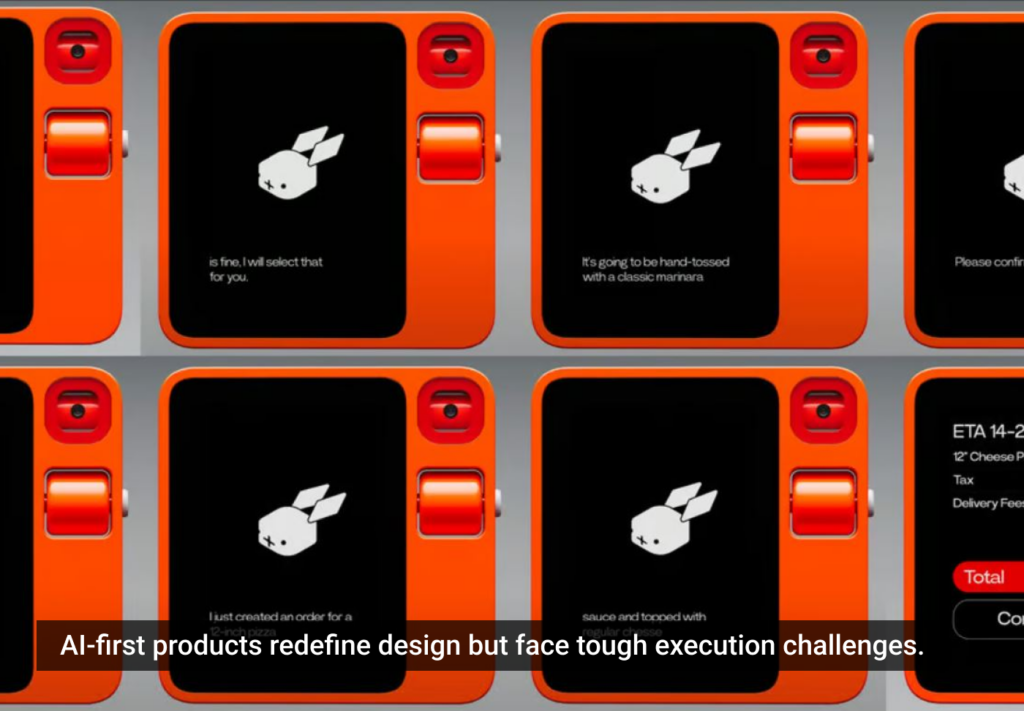In my last article, I talked about some of the reasons people have difficulty making good financial decisions. UX professionals who work in the financial services domain know it’s a challenge to design for successful financial decision-making on the part of their users.
Traditionally, these challenges have been addressed by trying to improve the presentation and delivery of information—by trying to help people better understand their options and the risks of not saving; by helping them learn to become better investors and savers. But as I mentioned in my first article, this approach has not offered the kind of breakthrough success rates that are needed.
In that article, I outlined a number of reasons that make it difficult for people to give up money they could spend today in order to save it for the future:
- The future is unknown. People don’t know how long they’ll live or what kind of health they’ll be in, what their financial needs will really be, or how well their investments will have done.
- The distant future can only be envisioned in an abstract way, and it’s difficult to plan concretely for something that seems so intangible.
- Saving money for the future takes discipline. It’s hard to even get started, and because there are no definitive deadlines, it’s easy to procrastinate with no immediate penalties.
- Many people feel overwhelmed with the amount of choices available. There are a plethora of options for types of accounts, types of service providers, types of investments, etc. The overwhelming number of choices often leads to paralysis—the decision to do nothing.
These reasons suggest that the problem may not be so much about lack of information or education as it is about the realities of human nature. The problem isn’t necessarily that people don’t know they should be saving, or even that people don’t understand enough about the mechanics of saving or investing. Many people seem to know, at least on an intellectual level, that they should be doing a better job of saving. But for many, this intellectual knowledge doesn’t seem to be enough to get them over the hurdle of getting started or saving enough. A disconnect develops between what they say they want and what they actually do.
In this article I want to focus on what we can consider from a UX design perspective to address these challenges. I’ll draw from a set of powerful truths about how people evaluate options and make decisions. These have been gleaned from robust research findings within the fields of behavioral decision theory and cognitive psychology.
Specifically, I’ll expound two real-world financial services programs and how they’ve achieved success by leveraging the power of loss aversion, framing, inertia, and salience.
Save More Today
Years ago, a prominent U.S. bank started an innovative program designed to help people become more successful at increasing their savings. Every time a program participant uses their debit card for a purchase, the debit amount is rounded up to the next whole dollar, and the difference in change is deposited into their account. So for example, let’s say I spend $4.50 against my debit card. The program rounds this number to the next whole dollar—to $5.00 in this case—and deposits the difference (50 cents) into my account. It turns out that this program has been highly successful. There are three primary reasons why this program works so well.
First, the amount that is deposited into my account for each transaction is minimal—always less than a dollar. In my last article, I said that saving money is hard because people experience the amount saved as a loss to the cash available to spend today. The challenge of saving money is especially salient and painful for those who are just starting out—for those who have young families, for example. During this time of life, there are lots of expenses and bills to pay, which can make it challenging for those just starting out in the workforce with their first job or a new career. But even for people in these situations, putting aside a handful of change at each debit card transaction seems rather inconsequential and painless.
Second, the program operates automatically. It requires no effort on the part of the cardholder to make the process work. It also operates in the background so it doesn’t require the cardholder’s awareness or attention at the time of each transaction.
Third, because the transaction happens with plastic (a debit card) and not cash, the “loss” of money becomes less salient. Imagine how different this experience would be if it involved the handling of cash instead of plastic. In fact, it bears similarity to how payroll deductions work. Taxes and the cost of medical benefits are deducted from an employees’ paycheck before they receive the net amount. Think how different that experience would be if employees got paid their full paycheck amount, and then had to take the step of paying out taxes and medical costs once they had received their check. Surely, this type of transaction would be experienced in a much more painful way.
When the future is far away, people’s ability to envision it in a concrete way is limited
My guess is that the success of this program has been largely driven by the way it leverages two powerful truths about how people evaluate options and make decisions:
- Loss aversion: Life is full of ups and downs, gains and losses. Research shows that even for gains and losses of equal magnitude, the pain of a loss is much more salient than the satisfaction of a gain. The program successfully manages people’s feeling or perception of loss by keeping each amount “lost” to savings small, by keeping every transaction to less than a dollar.
- Salience: How a loss is experienced has a lot to do with how salient it feels. The program effectively manages the salience of loss in two ways. First, it operates automatically without calling attention to the loss incurred at the point of each transaction, and second, each transaction involves plastic rather than cash.
Save More Tomorrow
In an effort to help people become more successful at saving for retirement, two individuals well known in the area of behavioral economics—Richard Thaler and Shlomo Benartzi—devised a program called Save More Tomorrow, that has been remarkably effective. In a nutshell, the program asks people to make a commitment now, to allocating part of their future salary increases toward retirement savings.
There are four key reasons this program has proven successful.
First, the program asks people to make a decision about how much to set aside for retirement savings, but it doesn’t ask them to decide how much they will set aside today. Instead, it asks how much they want to set aside in the future. This is instrumental because, in many ways, it’s easier to make a decision about tomorrow rather than today, particularly when the decision involves the salience of loss: the loss that is incurred when people give up money that could be spent today by instead setting it aside for the future. Surely, it’s much easier to experience the loss tomorrow than it is to experience it today.
Second, as we saw in my previous article, people’s ability to envision the future has everything to do with how near or far away that point in the future is. When the future is far away (from a time perspective), people’s ability to envision it in a concrete way is limited. The distant future is envisioned, at best, only abstractly. So when people are asked to decide now how much money to allocate for retirement at some point in the future (when they get their next salary increase), their ability to think concretely about how this will impact their future finances or lifestyle will be somewhat abstract and difficult to envision in any concrete way. The advantage is that people become more willing to make a commitment about saving for retirement.
Third, whereas the program could have asked people to make a commitment for some arbitrary point in the future, it goes a step further by associating the decision with a significant future event: the timing of the employee’s next salary increase. Why is this so effective? A loss is a loss regardless of when it occurs, after all. But by tying the start date of retirement saving with the next salary increase, the program lessens and maybe even alleviates the feeling of loss, since the amount to be saved is simply a fraction of the salary increase. Because the loss (the amount set aside for retirement savings) is essentially absorbed by the salary increase, the net result is still a gain: a salary increase. Employees incur a loss without ever experiencing it directly!
A fourth reason the program is successful is because once people have made a pre-commitment to start saving at the point of their next salary increase, that commitment goes into effect automatically. It also leverages the reality that people are not likely to make changes to the program once it is underway. Making changes requires work or effort, after all, and research shows that people tend to maintain status quo for exactly this reason.
The Save More Tomorrow program has been successful because of the way it leverages four powerful truths about how people evaluate options and make decisions:
- Inertia: Inertia refers to people’s tendency to maintain status quo, and to the effort it takes to simply get started when making a change. This program is successful because it finds a way to overcome people’s difficulty in getting started, while also leveraging the fact that people like to maintain status quo. Because the program asks for a pre-commitment now to get started in the future, the program essentially enables “getting started” to happen automatically as part of the pre-commitment process. And because people like to maintain status quo, they rarely make changes to the program once it’s underway, thereby ensuring that they’ll continue to save money on an ongoing basis.
- Framing: Framing has to do with how a decision problem or situation is presented. This program is effective because it frames or positions the decision problem as a pre-commitment aligned with a future event (the next salary increase) as opposed to now.
- Loss aversion: The program minimizes (or negates) the perception of loss by handling the math of gains and losses in an especially effective way. By pairing the loss (of retirement savings) with the gain of a salary increase, the net result is still a gain.
- Salience: The salience of loss (retirement savings) is minimized in two ways: By orienting people’s attention to the future, which is at best, envisioned in only an abstract way. And, by bumping future losses against future gains (as described in the bullet point above).
In Summary
The success of the programs outlined above is driven largely by the fact that each has utilized creative ways to address the challenges outlined in my previous article. Traditionally, these challenges have been addressed by trying to improve the presentation and delivery of information, but in fact, the problem is not so much about lack of information or education as it is about the realities of human nature.
For UX practitioners, the situation is exacerbated because it seems our UX toolbox is much better equipped to solve for information design than it is to solve for the challenges of human psychology. While designing for optimal information content and layout is essential, it’s not adequate by itself to deal effectively with the challenges we encounter in the financial services domain. I believe design breakthroughs will happen when we are able to effectively leverage the same powerful truths that are at work in the programs I’ve described here.
Image of piggy bank courtesy Shutterstock.







